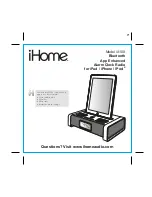
5-2
Alignment
PLL & Transmitter
Set up the test equipment as shown for transmit-
ter alignment.
Maintain the supply voltage at 13.8 V DC for all
steps.
Before beginning, connect the transceiver and PC
using the CT-71 programming cable, and download
the EEPROM data from the transceiver to the com-
puter.
Store this data in a disk file so that it can be saved
and retrieved later. Using the table below, program
the channel, CTCSS, and DCS alignment settings for
your transceiver version. Upload this file to the trans-
ceiver.
Note
: Signal levels in dB referred to in this proce-
dure are based on 0 dB
μ
= 0.5
μ
V (closed cir-
cuit).
Caution:
Do not connect the audio output line to
ground, and be certain that the speaker has
adequate capability to handle the audio
output from the radio.
Because of the bridge audio amplifier cir-
cuit used in the radio, it is necessary to con-
struct and use a simple audio load test
adapter as shown in the schematic diagram
below, when conducting receiver align-
ment steps.
PLL VCV
U
Connect the positive lead of the DC voltmeter to
test point
TP1010
(VCV) on the Main Unit, as in-
dicated in the figure, and connect the negative lead
to chassis ground.
U
Set the transceiver to the high band edge fre-
quency channel (CH4), then key the transmitter,
and adjust
T1006
on the Main Unit for 7.0 V ±0.1
V on the voltmeter.
U
Adjust
T1005
on the Main Unit for 7.0 V ±0.1 V
on the voltmeter.
U
Select the band center frequency channel (CH2)
and Adjust
T1011
on the Main Unit for 7.0 V ±0.1
V on the voltmeter.
U
Next select to the low band edge frequency chan-
nel (CH1) and confirm the VCV is 3.1 V ±0.3 V on
the voltmeter.
U
Select the band center frequency channel (CH3)
and confirm the VCV is 3.75 V ±0.3 V on the volt-
meter.
U
Select the low band edge frequency channel
(CH3), than Key the transmitter, and confirm the
VCV is 1.7 V ±0.3 V on the voltmeter.
PLL Reference Frequency
U
With the wattmeter, dummy load and frequency
counter connected to the antenna jack.
U
Select the high band edge frequency channel
(CH4), and select the “low” power output level.
U
key the transmitter and adjust
TC1001
on the
Main Unit, if necessary, so the counter frequency
is within 100 Hz of the channel center frequency
for the transceiver version.
Alignment Channel Frequencies
Inline Wattmeter
Deviation Meter
Frequency
Counter
RF Sampling
Coupler
RF Signal
Generator
Transceiver
Power Supply
13.8V DC
CT-71 connection
Cable
P C
COM port
2-ohm
10W
3.5 PLUG
2-ohm
10W
470uF
GND
Attenuated
Test Output(1/2)
(4-ohm Dummy Load)
AF Test Adapter Schematic
C
HANNEL
CH 1
CH 2
CH 3
CH 4
CH 5
V
ERSION
“
B
”
37.00 MHz
43.49 MHz
43.50 MHz
43.50 MHz
43.50 MHz
V
ERSION
“
A
”
29.70 MHz
33.34 MHz
33.35 MHz
33.35 MHz
33.35 MHz
DCS
E
NCODE
None
None
None
None
023
CTCSS
E
NCODE
None
None
None
151.4 Hz
None
F
REQUENCY
(
S
IMPLEX
)
Summary of Contents for VX-5500L
Page 13: ...1 12 Operating Manual Reprint Note ...
Page 17: ...3 2 Block Diagram ...
Page 18: ...3 3 Block Diagram ...
Page 19: ...3 4 Interconnection Diagram ...
Page 27: ...5 6 Alignment Note ...
Page 30: ...Circuit Diagram 6A 2a MAIN Unit Lot 26 ...
Page 31: ...6A 2b MAIN Unit Lot 26 Circuit Diagram ...
Page 54: ...6B 1 Circuit Diagram DISPLAY Unit Lot 1 7 ...
Page 55: ...6B 2 Note DISPLAY Unit Lot 1 7 ...
Page 56: ...6B 3 Parts Layout Side A 1 2 3 F A C B E D DISPLAY Unit Lot 1 7 ...
Page 57: ...6B 4 g 1 2 3 e b a d c f Parts Layout Side B DISPLAY Unit Lot 1 7 ...
Page 58: ...6B 5 DISPLAY Unit Lot 8 25 Circuit Diagram ...
Page 59: ...6B 6 DISPLAY Unit Lot 26 Circuit Diagram ...
Page 60: ...6B 7 DISPLAY Unit Lot 8 Parts Layout Side A 1 2 3 F A C B E D ...
Page 61: ...6B 8 DISPLAY Unit Lot 8 g 1 2 3 e b a d c f Parts Layout Side B ...
Page 67: ...6B 14 DISPLAY Unit Note ...
Page 69: ...6C 2 KEY Unit Note ...
Page 71: ...6C 4 KEY Unit Note ...
















































